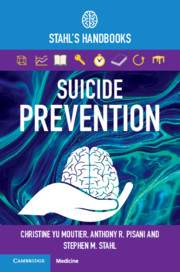Book contents
- Suicide Prevention
- Suicide Prevention
- Copyright page
- Contents
- Acknowledgements
- Section 1 Suicide Prevention Overview
- Section 2 Clinical Risk Assessment and Care
- Section 3 Special Topics: Medicolegal Considerations and Specific Populations
- 11 Medicolegal Risk Management
- 12 The Role of Culture and Societal Factors
- 13 Youth and Adolescents
- 14 Military and Veterans
- 15 Older Adults
- 16 LGBTQ Populations
- 17 Suicide Loss Survivors
- Appendix Resource List
- Index
- References
12 - The Role of Culture and Societal Factors
from Section 3 - Special Topics: Medicolegal Considerations and Specific Populations
Published online by Cambridge University Press: 15 May 2021
- Suicide Prevention
- Suicide Prevention
- Copyright page
- Contents
- Acknowledgements
- Section 1 Suicide Prevention Overview
- Section 2 Clinical Risk Assessment and Care
- Section 3 Special Topics: Medicolegal Considerations and Specific Populations
- 11 Medicolegal Risk Management
- 12 The Role of Culture and Societal Factors
- 13 Youth and Adolescents
- 14 Military and Veterans
- 15 Older Adults
- 16 LGBTQ Populations
- 17 Suicide Loss Survivors
- Appendix Resource List
- Index
- References
Summary
Cultural factors including conscious and unconscious beliefs and attitudes have an influence on suicide risk for individuals, families, and populations. Science shows clearly that suicide risk draws on multiple risk and protective factors at the individual and environmental levels. By understanding how particular beliefs and stigma may impact suicide risk, healthcare professionals can communicate more effectively with patients from different cultural backgrounds for the purpose of both risk assessment and patient care. For example, eliciting the patient’s perspectives about particular life challenges, about mental healthcare, and even about suicide itself, can be useful in engaging the patient in both self-care and treatment planning.
- Type
- Chapter
- Information
- Suicide PreventionStahl's Handbooks, pp. 205 - 215Publisher: Cambridge University PressPrint publication year: 2021

